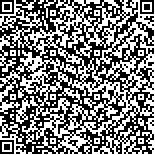| 引用本文: |
卫华琴, 李苗.白果内酯改善环磷酰胺所致小鼠免疫功能低下及其相关机制的研究[J].湖南中医药大学学报,2025,45(4):624-630[点击复制] |
|
| |
|
|
| 本文已被:浏览 12次 下载 3次 |
| 白果内酯改善环磷酰胺所致小鼠免疫功能低下及其相关机制的研究 |
| 卫华琴,李苗 |
| (西北妇女儿童医院药剂科, 陕西 西安 710061;西北妇女儿童医院检验科, 陕西 西安 710061) |
| 摘要: |
| 目的 探究白果内酯对环磷酰胺(CTX)所致免疫功能低下小鼠的影响。方法 将24只C57BL/6J小鼠随机分为正常组、模型组及白果内酯低剂量(10 mg/kg)组和白果内酯高剂量(20 mg/kg)组,每组6只。除正常组外,其余各组于实验第1~3天腹腔注射50 mg/kg CTX建立小鼠免疫功能低下模型。正常组和模型组小鼠灌胃等体积生理盐水,白果内酯治疗组以低、高剂量的白果内酯灌胃,每天1次,连续治疗14 d。实验结束后,检测小鼠体质量、胸腺和脾脏重量,计算胸腺和脾脏指数;计数板计数法检测外周血红细胞、白细胞和血小板数量;CCK-8法检测脾脏T淋巴细胞、B淋巴细胞增殖功能及巨噬细胞吞噬指数;流式细胞术检测脾细胞中CD4+、CD4+/CD8+T细胞比例及NK细胞比例;HE染色观察脾脏和胸腺结构变化;Western blot检测脾脏磷脂酰肌醇-3-羟激酶(PI3K)、p-PI3K、丝氨酸/苏氨酸蛋白激酶(Akt)和p-Akt蛋白表达水平。结果 与正常组比较,模型组体质量、脾脏指数和胸腺指数降低(P<0.05,P<0.01,P<0.001);白细胞和血小板数量降低(P<0.001);巨噬细胞、T淋巴细胞和B淋巴细胞增殖指数降低(P<0.05,P<0.001);CD4+T细胞比例、CD4+/CD8+比值和NK细胞比例降低(P<0.01,P<0.001);胸腺和脾脏病理结构显著损伤;p-PI3K和p-Akt蛋白表达降低(P<0.001)。与模型组比较,白果内酯低剂量组血小板数量、巨噬细胞和T淋巴细胞增殖指数及CD4+T细胞比例、NK细胞比例、p-PI3K和p-Akt蛋白表达均升高(P<0.05);与模型组比较,白果内酯高剂量组体质量(P<0.05)、脾脏指数(P<0.01)、胸腺指数(P<0.05)、白细胞和血小板数量(P<0.05)、巨噬细胞和T淋巴细胞、B淋巴细胞增殖指数(P<0.05,P<0.01)及CD4+T细胞比例(P<0.01)、CD4+/CD8+比值(P<0.05)、NK细胞比例(P<0.001)、p-PI3K和p-Akt蛋白表达(P<0.05)均升高;白果内酯高、低剂量组胸腺和脾脏病理损伤改善。与白果内酯低剂量组比较,白果内酯高剂量组体质量、白细胞数量、NK细胞比例均升高(P<0.05)。结论 白果内酯可提高CTX诱导的免疫功能低下小鼠的特异性和非特异性免疫功能,作用机制可能与激活脾脏PI3K/Akt通路有关。 |
| 关键词: 免疫功能低下 白果内酯 环磷酰胺 磷脂酰肌醇-3-羟激酶 丝氨酸苏氨酸蛋白激酶 |
| DOI:10.3969/j.issn.1674-070X.2025.04.006 |
| 投稿时间:2024-07-04 |
| 基金项目:西北妇女儿童医院基础科研计划项目(202310045)。 |
|
| Amelioration of cyclophosphamide-induced immunocompromise in mice by bilobalide and its underlying mechanisms |
| WEI Huaqin, LI Miao |
| (Department of Pharmacy, Northwest Women's and Children's Hospital, Xi'an, Shaanxi 710061, China;Department of Laboratory Medicine, Northwest Women's and Children's Hospital, Xi'an, Shaanxi 710061, China) |
| Abstract: |
| Objective To investigate the effects of bilobalide on cyclophosphamide (CTX)-induced immunocompromise in mice. Methods A total of 24 C57BL/6J mice were randomly divided into a normal group, a model group, a low-dose (10 mg/kg) bilobalide group, and a high-dose (20 mg/kg) bilobalide group, with six mice in each group. Except for the normal group, the other groups were intraperitoneally injected with CTX (50 mg/kg) on the 1st to 3rd day of the experiment to establish an immunocompromised mouse model. The mice in the normal and the model groups were gavaged with an equal volume of normal saline, while the bilobalide groups received low- or high-dose bilobalide by gavage once daily for 14 consecutive days. After the experiment, the body weight, thymus and spleen weight of mice were measured, and the thymus and spleen indices were calculated. The number of peripheral blood erythrocyte, leukocyte, and platelet counts were assessed using a hemocytometer; the CCK-8 assay was used to evaluate the proliferation of spleen T and B lymphocytes as well as the phagocytic index of macrophages; flow cytometry was performed to analyze the proportion of CD4+ T cells, CD4+/CD8+ T cell ratio, and NK cell ratio in splenocytes. Histopathological changes in the spleen and thymus were observed using HE staining; Western blot was conducted to check the protein expression levels of phosphatidylinositol 3-kinase (PI3K), p-PI3K, serine/threonine protein kinase (Akt), and p-Akt in the spleen. Results Compared with the normal group, the model group exhibited a significant decrease in body weight, spleen index, and thymus index (P<0.05, P<0.01, P<0.001); reduced leukocyte and platelet counts (P<0.001); decreased proliferation indices of macrophages, T lymphocytes, and B lymphocytes (P<0.05, P<0.001); lower proportions of CD4+ T cells, CD4+/CD8+ ratio, and NK cell ratio (P<0.01, P<0.001); significant pathological damage to the thymus and spleen; and downregulated expressions of p-PI3K and p-Akt proteins (P<0.001). Compared with the model group, the low-dose bilobalide group showed increased platelet count, macrophage and T cell proliferation indices, CD4+ T cell proportion, NK cell ratio, and expressions of p-PI3K and p-Akt proteins (P<0.05). Compared with the model group, the high-dose bilobalide group exhibited significant increase in body weight (P<0.05), spleen index (P<0.01), thymus index (P<0.05), leukocyte and platelet counts (P<0.05), proliferation indices of macrophages, T lymphocytes, and B lymphocytes (P<0.05, P<0.01), CD4+ T cell proportion (P<0.05), CD4+/CD8+ ratio (P<0.05), NK cell ratio (P<0.05), and p-PI3K and p-Akt protein expressions (P<0.05). Additionally, both low- and high- dose bilobalide groups showed amelioration in thymus and spleen pathological damage. Compared with the low-dose bilobalide group, the high-dose bilobalide group demonstrated significantly increased body weight, leukocyte count, and NK cell ratio (P<0.05). Conclusion Bilobalide can enhance both specific and nonspecific immune functions in CTX-induced immunosuppressed mice, and its mechanism of action may be related to the activation of the spleen PI3K/Akt signaling pathway. |
| Key words: immunocompromise bilobalide cyclophosphamide phosphatidylinositol-3-hydroxykinase serine-threonine protein kinase |
|

二维码(扫一下试试看!) |
|
|
|
|




